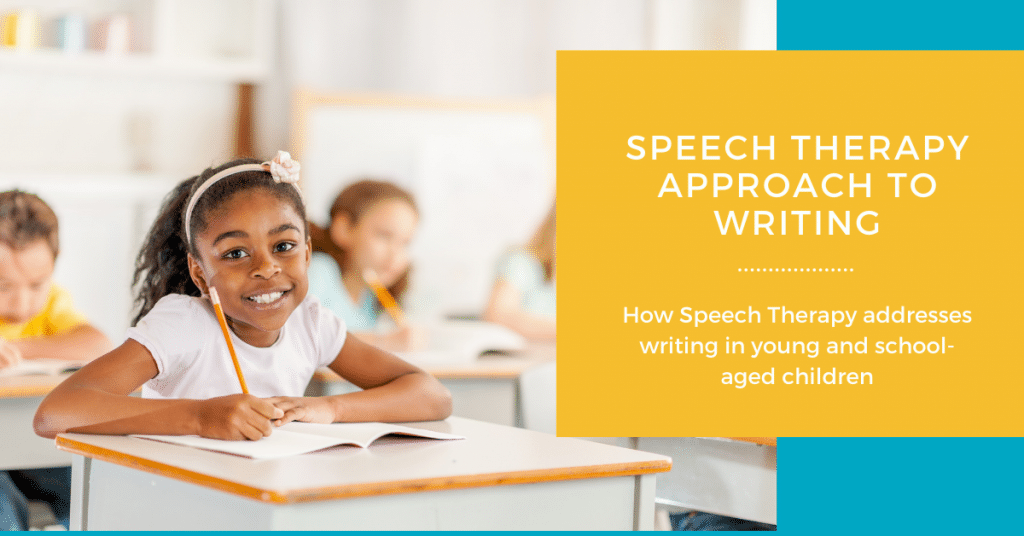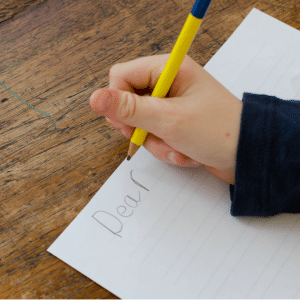Written by: Regina De Canto, M.S, CCC-SLP

When it comes to writing, what exactly are speech therapists looking for and how are they helping their young clients?
Speech therapy works on expressive and receptive language- even with writing! With spoken language, there are many rules we follow that fall under morphology (e.g., putting a “s” for regular plurals), semantics (e.g., vocabulary), syntax (e.g., how we organize the words we use in our sentences), and pragmatics (e.g., talking for a variety of purposes). Speech therapy addresses these same subsystems of language in written expression. Since writing is such a dynamic and multisensory process, it is complex and can be overwhelming for some of our young children.
It may not be developmentally appropriate for preschoolers to work on writing, per se, but we can certainly work on prerequisite skills that are necessary for the foundation of writing. Speech therapy would address working on numbers, letter names, and their corresponding sounds. At this age, preschoolers should be able to recite their letters and know what sounds each letter makes. They should also be able to recognize their name and even know how to spell their name. We work on this through:

including the skills needed for writing
- Music and singing
- Alphabet puzzles
- Coloring pages
- Magnetic letters
- Arts & crafts
Kindergarten is the appropriate age to work on the basic, foundational skills of reading and writing. Speech therapy works on children writing their name, copying words and phrases, and spelling basic words. We are looking for our children to be able to write on a line, as opposed to having letters trail up or below the line. Letters should also be oriented correctly and have an appropriate space between letters and words. At this age, letter reversals are fine for now- but we would address that in speech therapy, too!

As children get older, their writing skills will progress to using more words in a sentence to describe objects or events. They are also following more complex academic directions like fill in the blank and creating basic sentences on their own. By this time, letter reversals should be eliminated. In the picture below, it should say “a big ball”, but the “b’s” are upside down. If we are still seeing significant letter reversals like in the picture below, your child may be showing signs of dyslexia.

Finally, in the later elementary school years, children are learning to write for a variety of purposes. They are learning to adjust their writing styles to narrate a story, write an informative paragraph, or even write a thank you letter. Speech therapy addresses how to adapt their writing to use more mature vocabulary and dynamic sentence structures like in the examples below:

- The dog is sitting.
- The dog is sitting on the floor.
- The big dog is sitting on the rug.
- The enormous dog is sitting and waiting to eat on the rug.
You can help your child with their writing needs outside of speech therapy, as well! Speech therapists will show you what to look for with your child’s writing and strategies to promote their expressive language through writing at home or even apply it to what they are already doing at school. Keep an open dialogue with your speech therapist to find out other ways you can help your child!


0 Comments